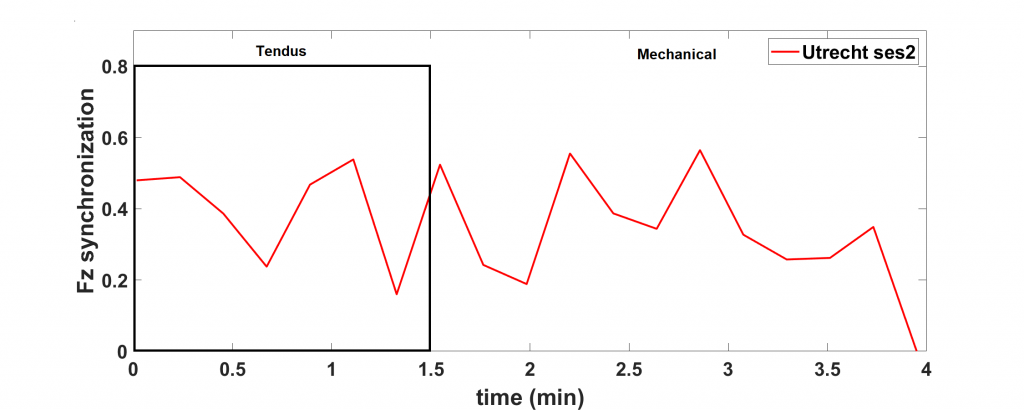By Debarati Banerjee
I am a cognitive neuroscientist working as a postdoctoral fellow in this project. My interest is to understand how the brain signals, measured through electroencephalography (EEG), of the two dancers are synchronized/desynchronized when they are performing in different mental and physical states of connectedness. During the performance, my focus remains on recording good quality EEG signals from the two dancers. Later, the aim is to analyze and statistically compute the inter-brain synchronization between the two data.
In the course of this process, I have realized that the journey of this exploratory endeavor is quite challenging! In general, EEG methodology is very sensitive to all kinds of major and minor body movements, sweating, and environmental electrical conditions, which lead to noisy and unclean data. To avoid that we are using a very sophisticated EEG system that helps to minimize these issues. However, we still face quite a few problems during the performances, which pose difficulties for a researcher to achieve good quality data in this out-of-the-laboratory scientific research. These difficulties mainly involve motion artifacts in the data due to a lot of head and body movements, losing connection between electrode and scalp due to detachment of electrodes, loss of data due to loss of connection within the equipment, and damage to the different parts of the EEG system.
This is what good quality EEG signals recording looks like:
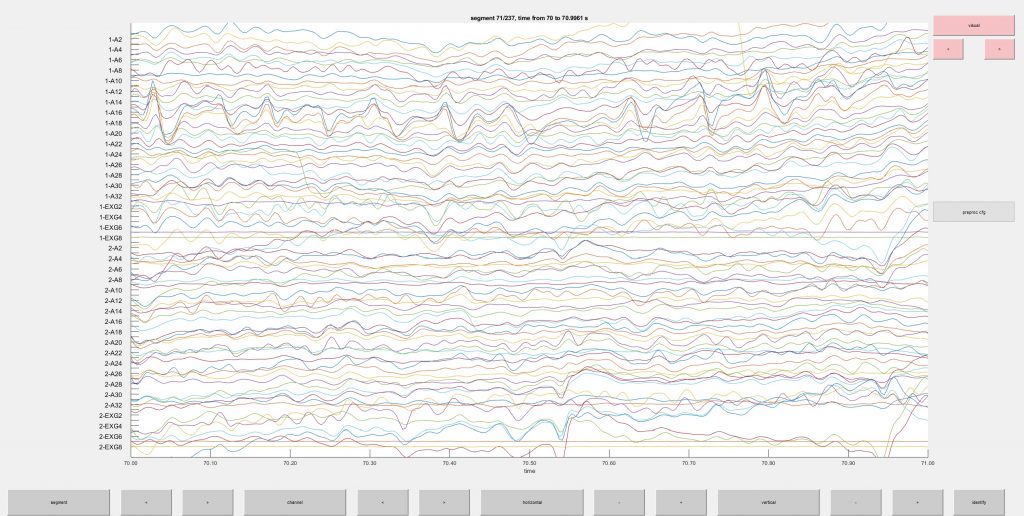
However, these are examples of bad segments in EEG recordings, which unfortunately happen during the performances too:
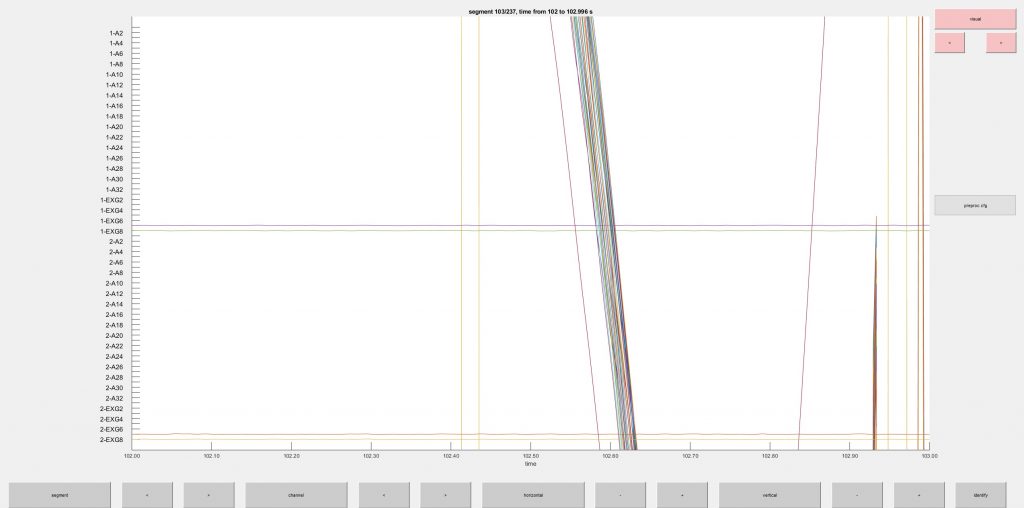
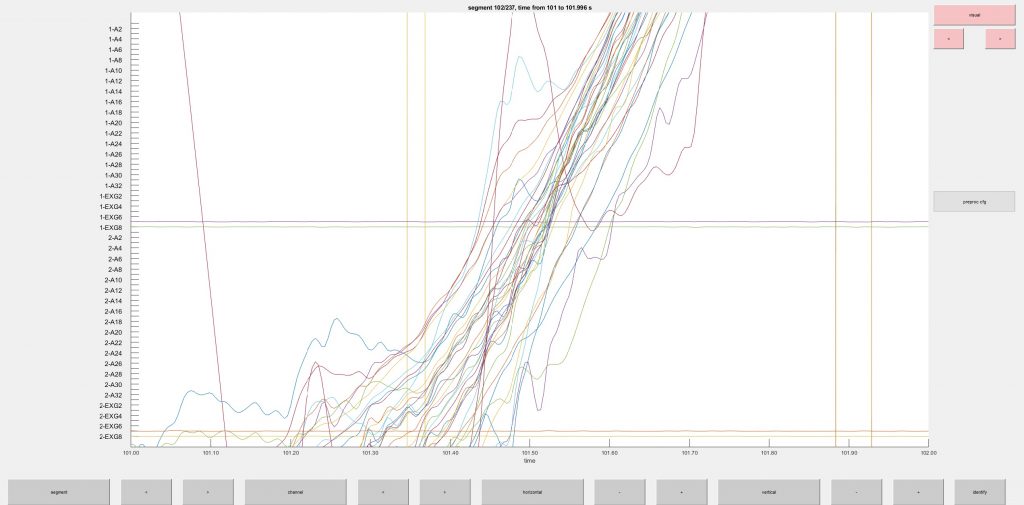
However, in this whole process I am learning to see things from different perspectives and constantly gaining insights to develop more controlled experimental conditions for a parallel laboratory experiment. For, example, some of the dance pieces seemed to involve too much of motion to be ideal for EEG methodology, while some seem to work pretty well.
The data from the performances till now are under analysis. Though there are lots of challenges in fetching clean data from most of the dance pieces, however, the we have some optimistic data from a few pieces that involve less motion (e.g., tendus, void, etc). For example, the inter-brain synchrony analysis of the data for the tendus condition show that the overall inter-brain synchrony is higher in the occipital (back of the head) region of the brain – figure 1 – compared to the frontal region – figure 2. We still need to delve deeper to interpret the data more comprehensively and get a conclusive story out of it.
The inter-brain synchrony is show on the y-axis ranging from 0-1, 0 meaning no synchrony and 1 meaning complete synchrony.
Figure 1. inter-brain synchrony in the back of the head region of the brain when dancers are performing tendus 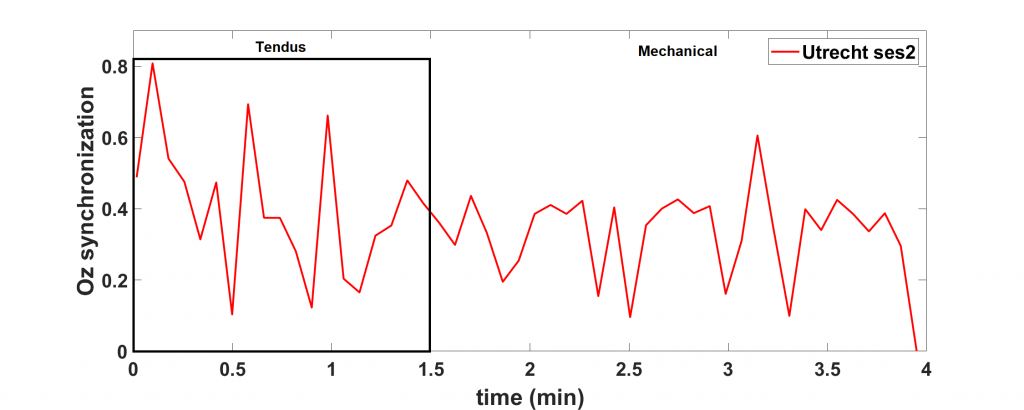
Figure 2. inter-brain synchrony in the frontal region of the brain when dancers are performing tendus
